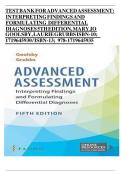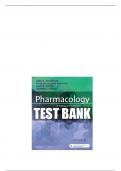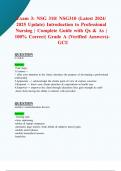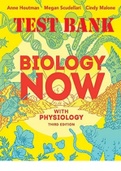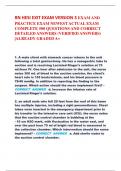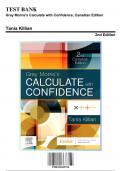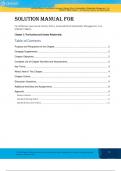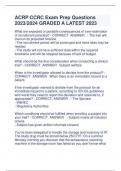Exam (elaborations)
TEST BANK FOR ADVANCED ASSESSMENT: INTERPRETING FINDINGS AND FORMULATING DIFFERENTIAL DIAGNOSES 5th Edition, Mary Jo Goolsby, Laurie Grubbs || complete guide.
- Institution
- Chamberlain College Of Nursing
- Book
- Advanced Assessment
TEST BANK FOR ADVANCED ASSESSMENT: INTERPRETING FINDINGS AND FORMULATING DIFFERENTIAL DIAGNOSES 5th Edition, Mary Jo Goolsby, Laurie Grubbs || complete guide.TEST BANK FOR ADVANCED ASSESSMENT: INTERPRETING FINDINGS AND FORMULATING DIFFERENTIAL DIAGNOSES 5th Edition, Mary Jo Goolsby, Laurie Grubbs |...
[Show more]
